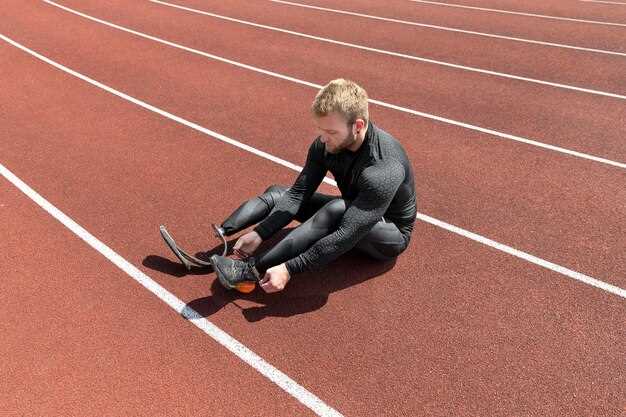
Before stepping onto the starting line, athletes must prioritize safety to ensure an enjoyable and incident-free experience. Taking the time to conduct essential safety checks can make a significant difference in preventing accidents and injuries during races or runs. This guide outlines the fundamental precautions that every runner should implement before participating in any event.
First and foremost, it’s crucial to assess your personal gear. This includes checking not only your attire but also your shoes, which should provide adequate support and traction. Wearing the right equipment reduces the risk of slips and falls, helping you maintain stability throughout your run. Additionally, familiarize yourself with the race course to anticipate any hazards such as uneven terrain or obstacles that could pose a threat to your safety.
Furthermore, hydration and nutrition play vital roles in maintaining your overall safety. Properly fueling your body and staying hydrated can enhance performance and reduce the likelihood of dehydration. Before the race, ensure that you have access to water stations and plan your intake accordingly. Being physically prepared is just as important as checking the external factors affecting your wellbeing.
Lastly, always keep communication lines open with fellow participants and race organizers. Make sure you are aware of the procedures in place for emergencies, including first aid stations and contact numbers for assistance. By doing so, you not only enhance your own safety but also contribute to a secure environment for everyone involved in the event.
Assessing Weather Conditions and Environment
Before participating in any race or run, it is crucial to assess the current weather conditions and the surrounding environment to ensure safety. Weather can drastically influence the performance and well-being of participants. Key factors to consider include temperature, humidity, precipitation, and wind speed.
Temperature plays a significant role in how the body responds during physical exertion. Extreme heat can lead to heat exhaustion or heatstroke, while cold temperatures may increase the risk of hypothermia. Runners should be aware of their own tolerances and dress appropriately to maintain optimal body temperature. Additionally, humidity can amplify the effects of heat, making hydration even more critical.
Precipitation, such as rain or snow, can impact visibility and running surfaces, increasing the risk of slips and falls. Wet conditions may require adjustments in footwear and caution in navigating slick terrain. In snowy conditions, participants should be alert to potential cold-related injuries and ensure they are equipped for such environments.
Wind speed is another essential factor; strong winds can not only hinder progress but also contribute to discomfort and fatigue. Evaluating the wind’s direction and intensity can aid in planning a race strategy, while also determining if conditions are safe for outdoor activities.
Beyond weather, it is vital to examine the surrounding environment for any hazards. Obstacles such as road construction, loose gravel, or wildlife can pose safety risks. Understanding the race course and conducting a thorough inspection prior to the event can help mitigate these dangers.
Ultimately, taking the time to assess both weather conditions and environmental factors enhances participant safety and satisfaction, contributing to a successful event. Always prioritize safety by making informed decisions based on current conditions and being prepared for changes that may arise.
Evaluating Gear and Equipment Integrity

Before any race or run, it is essential to evaluate the integrity of your gear and equipment to ensure maximum safety. Start by inspecting footwear; check for signs of wear such as uneven tread or compromised support that could lead to injury. Ensure that your shoes fit properly, as ill-fitting footwear can affect balance and performance.
Next, examine your clothing for any tears or frays that might cause discomfort or distractions during the race. Moisture-wicking materials should be free from significant wear to maintain their effectiveness in temperature regulation. Additionally, ensure your clothing is appropriate for the weather conditions to prevent overheating or hypothermia.
Assess other critical gear like helmets, pads, and any additional protective equipment. Look for cracks, dents, or deformities that may have occurred during previous use. Ensure all straps and fastenings are intact and secure. Protective gear is vital for safety, especially in high-impact sports.
Evaluate your hydration systems, such as water bottles or hydration packs. Make sure they are clean, functioning, and free of leaks to ensure adequate hydration during your run. It’s crucial to stay hydrated, and any malfunction in your hydration gear can lead to serious risks.
Lastly, if you use electronic devices like watches or fitness trackers, verify that they are fully charged and functioning correctly. This will allow you to monitor your performance and health metrics effectively during the race. Regularly performing these evaluations can significantly enhance your safety and performance on race day.
Establishing Emergency Contact and Medical Preparedness

Before participating in any race or run, establishing a reliable emergency contact is crucial. This individual should be aware of your participation and capable of responding efficiently in case of an incident. Share your race details, including location, duration, and expected finish time. Make sure this person has access to your personal medical information, along with any specific instructions that may be required in an emergency situation.
Furthermore, having a pre-check for medical preparedness is essential. Know the location of medical assistance at the event and familiarize yourself with the procedures to access it if needed. Carry a personal medical ID containing relevant health information, such as allergies, existing conditions, and current medications. This information can significantly assist medical personnel in providing the necessary care quickly.
In addition to preparing your emergency contact details, consider using a race-day checklist that includes verifying the medical response plan. Ensure that you are aware of any first aid stations and the availability of trained medical professionals during the event. This level of preparedness can help minimize risks and ensure safety throughout the race.




